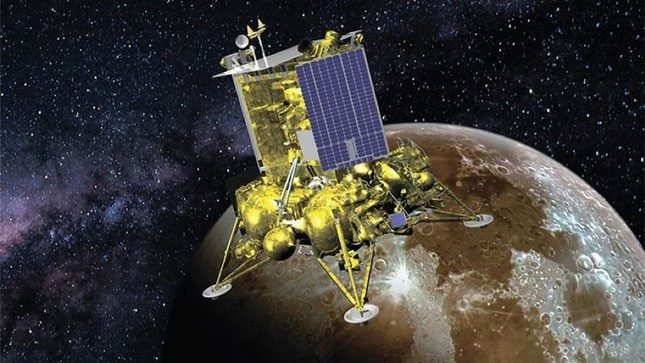The International Lunar Research Station is set to be realized by 2030, serving as the foundation for a space base that will support crewed missions.
During the preparation for the Luna-25 launch program, we can glean insights into some exciting concepts for human exploration of the Moon’s surface in the future. One such concept involves constructing a snow shelter on a lunar mound, utilizing the surrounding regolith for habitat.

The Luna-25 mission to land on the Moon’s surface failed.
Can Lunar Soil Be Used?
The fundamental concept here is to utilize lunar resources, which NASA refers to as In-Situ Resource Utilization (ISRU), meaning making use of materials available on-site as much as possible. If lunar soil can be used to create habitats, tools, and materials necessary for repairs, the economic burden for missions supporting lunar operations would be significantly reduced. One of the promising technologies in this regard is the production of additives or 3D printing using lunar rock as printing material.
Additionally, there are powerful communication devices, perhaps essential for any astronaut. This would be the kind of base where rovers could return after collecting lunar rocks, which could then be processed into materials for 3D printing, rocket fuel, and oxygen for astronauts’ life support systems. Water could also be extracted in similar facilities.
Lunar Vehicles
Another known concept is a lunar vehicle capable of navigating the Moon’s complex pockmarked surface. This vehicle resembles the Regolith Advanced Surface System Operations Robot (RASSOR) being developed by NASA, which can remain stationary while digging into the regolith with wheels spinning in the opposite direction. Mining in the Moon’s low-gravity environment will be very different from mining on Earth, and engineering teams will need to figure this out in the next two decades.
The living quarters for astronauts will provide relaxation after a busy day of work on the Moon. There are control stations described that could be used to remotely operate vehicles.
All these plans indicate that Russia has serious long-term plans for lunar exploration, and China and Russia will collaborate to compete with NASA’s ambitious Artemis program for lunar exploration. The United States intends to establish the Artemis base on the Moon, utilizing technologies similar to those explored in these concepts, including autonomous or remote-controlled vehicles, local resource utilization, and 3D printing.
The Luna-25 mission is not only a significant milestone for Russia but also a stepping stone for the future of lunar exploration. Russia is not alone in this endeavor, as India, China, the United States, and other countries also view the Moon as a destination for science and exploration.





















































